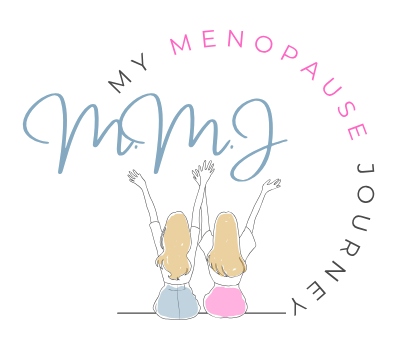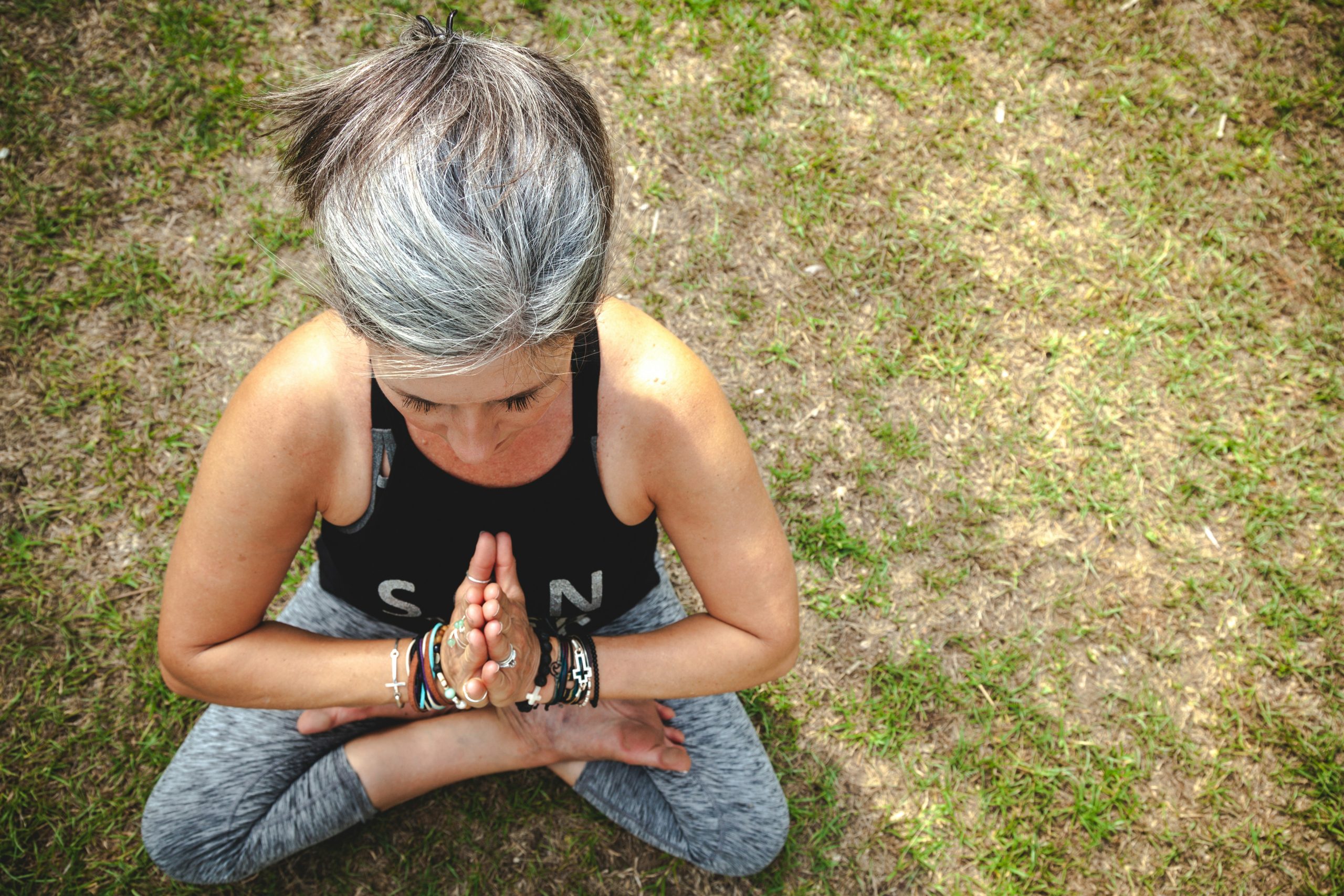Breathe Better, Feel Better in Menopause
Meditation & Mindful Breathing: Your Menopause Lifesavers
Meditation—whether you’re a seasoned pro or someone who gets bored after 10 seconds of silence—can be a total game-changer during menopause. And no, it’s not about sitting cross-legged on a mountain chanting like a monk (unless that’s your thing). It’s about staying sane when your body decides to launch hot flashes, mood swings, and brain fog at you like it’s playing emotional dodgeball.
Between forgetting why you walked into a room, sweating through your sheets at 3 AM, and having the patience of a hangry toddler, menopause isn’t exactly a walk in the park. But here’s the good news: meditation and mindful breathing can actually help.
If there’s one thing that can calm the storm of menopause, it’s your breath. Mindful breathing can regulate your nervous system and bring some much-needed peace, whether you’re battling anxiety, hot flashes, or that sudden, inexplicable urge to set something on fire.
Menopause can feel like your emotions got hijacked by a malfunctioning rollercoaster. One minute you’re fine, the next you’re crying because you dropped a spoon. And don’t get us started on the spontaneous internal heatwaves. But taking a few deep breaths? It’s like pressing a magical “reset” button for your body and mind.
The best part? It’s free, easy, and doesn’t involve awkward family apologies after a hormonal meltdown. In this article, we’ll break down simple, practical meditation and breathing techniques that anyone can try—no spiritual guru status required.
Why Breathing and Meditation Are Menopause Must-Haves
Breathing is something we all do (unless you’re a zombie—in which case, hello and welcome). But during menopause, it’s surprisingly easy to forget that this simple, automatic act can actually help. Mindful breathing isn’t just a hippie trend—it’s backed by science and can seriously take the edge off the hormonal chaos.
According to Body and Mind Online, controlled breathing helps lower cortisol levels—that’s the stress hormone that makes you want to strangle your partner for chewing too loudly. It can also reduce blood pressure and improve sleep, both of which tend to spiral during menopause like your tolerance for small talk.
Meditation takes it a step further. Think of it as a control-alt-delete for your brain. It gives you a moment to pause, breathe, and not immediately plan your escape to a hermit hut the next time someone asks, “Are you okay?” for the tenth time.
Research from The University of Melbourne shows that mindfulness-based stress reduction (MBSR)—which includes meditation—can ease anxiety, improve sleep, and even reduce the severity of hot flashes. And considering the alternative is rage-fanning yourself while stripping off clothes in the frozen foods aisle, meditation is worth a shot.
Breathing Techniques for Menopause
Box Breathing
(Contain the Crazy with a Box)
Simple. Powerful. Requires only your lungs (which, lucky you, you already have).
How-To:
Step 1: Inhale (4 seconds)
Breathe in deep—like coffee-sniffing deep. Think: calm, patience, superhuman restraint.
Step 2: Hold (4 seconds)
Freeze time. Pause before unleashing menopause-fueled truth bombs.
Step 3: Exhale (4 seconds)
Slow breath out. Blow away stress and that snarky reply you almost sent.
Step 4: Hold (4 seconds)
Float in your smug, zen bubble. You’re surviving the madness like a queen.
Step 5: Repeat
Until you feel at least 10% less likely to hurl something.
4-7-8 Breathing
(a.k.a. The “Please Let Me Sleep” Technique)
Menopause insomnia is no joke—but this simple breathing method can help calm your racing mind and lull you into dreamland.
How-To:
Step1: Inhale through your nose for 4 seconds
Deep and slow—like you’re breathing in the comforting scent of coffee or your favourite wine.
Step 2: Hold your breath for 7 seconds
Just enough time to reflect on your day—or question your past haircut choices.
Step 3: Exhale through your mouth for 8 seconds
Slowly release the tension, the to-do list, and that embarrassing memory from 2007.
Step 4: Repeat for a few minutes
Keep going until you feel your body unwind and your brain finally agree to chill.
Alternate Nostril Breathing
(Yep, It Works)
Looks weird, feels amazing. This simple breath trick calms your nervous system and menopausal chaos.
How-To:
Step 1: Sit Somewhere Quiet
Shoulders relaxed, back straight.
Step 2: Close Right Nostril
Thumb on nostril, gentle pressure.
Step 3: Inhale Left
Breathe in calm and control.
Step 4: Close Left, Hold
Just a pause, not a panic.
Step 5: Exhale Right
Let out stress and snarky thoughts.
Step 5: Inhale Right
Breathe in clarity and chill.
Step 6: Close Right, Exhale Left
Release the drama.
Step 7: Repeat 1–2 mins
Until you feel vaguely sane.
Congratulations! You just hacked your nervous system with nothing but your fingers and some air. Menopause may throw a lot at you, but at least now, you’ve got a breathing trick up your sleeve—literally.
How Breathing Saved Me from an Office Meltdown

Menopause loves to test your patience—especially at work, where throwing things isn’t considered “professional.”
One day, I was at my desk, minding my own business, when I felt it—a wave of irritation so strong I could have ripped my computer in half. My inbox was overflowing, my boss had just sent a vague but urgent email (my favourite kind), and my co-worker was loudly crunching on a carrot like a damn farm animal.
Then came the heat. That unmistakable, full-body furnace feeling. My skin started burning, my heart pounded like I’d just sprinted up ten flights of stairs, and suddenly, everything—everything—felt completely overwhelming. I was two seconds away from either bursting into tears or flipping my desk.
Instead of quitting on the spot and moving to a remote island (which, let’s be honest, was very tempting), I decided to try some box breathing. I grabbed my phone, mumbled something about needing the bathroom, and made a beeline for the only place in the office where I could be alone.
Locking the door behind me, I placed my hands on the cold sink, took a deep breath, and started: In for 4, hold for 4, out for 4, hold for 4. I repeated it a few times, staring at my own reflection like, Alright, let’s get it together.
After a few rounds, my heart rate slowed, my shoulders relaxed, and my brain finally unclenched. I was still annoyed but at least I wasn’t on the verge of a full-blown breakdown. Breathing didn’t magically make me love my job, but it did stop me from making a scene. And in the wild world of menopause, small wins can make all the difference.
Making Mindful Breathing a Habit (Because You Know You’ll Forget Otherwise)
Breathing exercises work best when you don’t just save them for full-blown meltdowns. If you only remember to breathe deeply when you’re about to launch your laptop out the window, you’re missing out on the real magic of mindful breathing.
The trick? Make it part of your daily routine, so it’s there when you actually need it. Here’s how to sneak it in without it feeling like another chore on your never-ending list:
Breathe before getting out of bed.
Instead of immediately dreading the day (or reaching for your phone to scroll through emails and bad news), take five slow breaths before your feet even hit the floor. It’s a tiny act of kindness to yourself before life comes at you full speed.

Use it before stress-inducing situations.
Meetings, social events, family gatherings—basically anywhere you might be trapped in conversation with someone who tests your patience. A few deep breaths beforehand can help keep you calm and prevent any regrettable outbursts.
Pair it with something you already do.
Waiting for your coffee to brew? Sitting at a red light? About to hit “Join Meeting” on a Zoom call? That’s your cue. Attach breathing to everyday moments so it becomes second nature.
Set a reminder on your phone—you’ll be glad you did.
Because let’s be real—you’ll forget. A little notification that says “Breathe, you magnificent human” can go a long way.
Make it your “stepping away” excuse.
Feeling overwhelmed? Instead of snapping at someone or rage-texting, excuse yourself for two minutes of breathing. No one has to know you’re doing it—they’ll just assume you’re off handling important business (which, technically, you are).
Even two minutes a day can make a difference. Plus, let’s be honest—it’s a great way to sneak in a break when people start annoying you.
Breathe Now, Thank Yourself Later
Mindful breathing isn’t just for yoga lovers—it’s for anyone trying to survive menopause without committing a minor crime. Whether you’re dealing with stress, hot flashes, or general “I’m going to lose it” moments, breathing is your secret weapon. It’s free, it’s easy, and best of all, it won’t get you arrested.
So next time menopause tries to ruin your day, take a deep breath. You’ve got this.
Meditation Techniques (for the Not-So-Zen)
Not sure where to start? Here are a few meditation techniques that won’t make you feel like you’re failing at inner peace.
Guided Meditation
If sitting in silence sounds like torture, guided meditations are the way to go. Apps like Insight Timer have menopause-specific meditations that focus on sleep, relaxation, and hot flash relief. And let’s be real, anything that promises to help with that is worth a listen.
Try this: Search “menopause meditation” on YouTube and follow along. Worst case, you get five minutes of quiet before life yells at you again.
Body Scan Meditation
Perfect for when you’re lying in bed, exhausted but unable to sleep because your legs suddenly feel like they’re throwing a rave (restless legs, anyone?). This technique involves mentally scanning your body from head to toe, releasing tension as you go.
Try this: Close your eyes, start at your feet, and work your way up. If you doze off before you finish, congrats—you hacked your way into better sleep.
Mindfulness Meditation
The beauty of mindfulness meditation is that you can do it anywhere, anytime. Just focus on your breath, notice the sensations in your body, and when your mind starts listing everything you need to do, gently bring it back.
Try this: The next time you’re stuck in traffic or waiting for the kettle to boil, focus on your breath instead of mentally composing a strongly worded email to your internet provider.
Meditation vs. My Menopausal Meltdowns
I used to think meditation was for people with way more patience than me. But one night, after waking up at 2 AM for the third time in a row, feeling like I was on fire and plotting ways to banish my doona forever, I decided to give it a go.
I started with a five-minute guided meditation. Did I instantly achieve inner peace? Absolutely not. But I did feel slightly less like throwing my pillow across the room.
Soon, meditation became part of my nightly routine—just a few minutes before bed to calm my frazzled nervous system. And here’s the kicker: it actually worked. My sleep improved, I was less reactive during the day (which my wife deeply appreciated), and I no longer felt like my brain was running on 57 open tabs.
Common Meditation Misconceptions (a.k.a. Excuses You Might Be Using)
“I can’t meditate because my mind won’t shut up.”
→ That’s normal. Meditation isn’t about having no thoughts; it’s about noticing them and not letting them take over.
“I don’t have time to meditate.”
→ If you have time to scroll through social media for 10 minutes, you have time to meditate. Just saying.
“Meditation is too ‘woo-woo’ for me.”
→ There’s nothing mystical about it—it’s backed by science and has been proven to reduce stress, improve focus, and help with emotional regulation.
Meditation isn’t about perfection; it’s about giving yourself a few moments of stillness in the madness. Whether it’s five minutes of deep breathing, a full guided meditation, or simply sitting quietly with a cup of tea, the goal is to find what works for you.
And if all else fails, just remember: taking a deep breath before losing your cool is technically meditation too.
Australian Resources for Support (Because We All Need Backup):
Disclaimer: This article is for informational purposes only and is not intended as medical advice. While mindful breathing can be a helpful tool for managing stress and menopause symptoms, it is not a substitute for professional healthcare. If you have any concerns about your health or symptoms, please consult a qualified medical professional. Always listen to your body and seek medical advice if needed.


